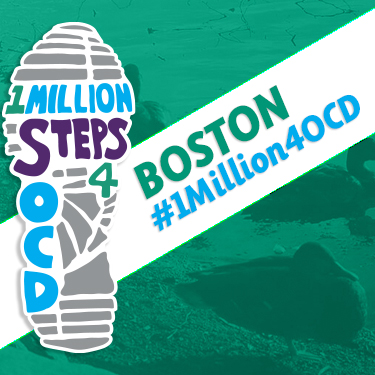What is Body Dysmorphic Disorder (BDD)?
- Thinking too much about an imagined or slight flaw in a person’s own looks. (APA, 2000). If there is a slight flaw, the person’s concern is extreme.
- These unhappy feelings are consuming. These feelings cause harmful beliefs and attitudes that affect thoughts, emotions and behaviors. These can then harm all areas of a person’s life, such as their social activities and job.
- No other mental disorder, for example eating disorders, cause these consuming feelings.
What are the symptoms of BDD?
- Fixation and thoughts about appearance
- Mirror checking-Spending too much time staring in a mirror/shiny surface at the real or imagined flaw
- Avoidance of mirrors/shiny surfaces
- Their belief is very strong even if evidence does not support it (this is also called Overvalued Ideation or OVI)
- Covering up the “afflicted area.” (e.g. hats, scarves, make-up)
- Repeatedly asking others to tell them that they look okay (also referred to as ‘reassurance seeking’).
- Frequent unnecessary appointments with medical professionals/surgeons
- Repeated unnecessary plastic surgery
- Compulsive skin picking. Often, nails and tweezers are used to remove blemishes/hair.
- Avoiding social situations, public places, work, school, etc…
- Leaving the house less often or only going out at night to prevent others from seeing the “flaw”.
- Keeping the obsessions and compulsions secret due to feelings of shame.
- Emotional problems, such as feelings of disgust, depression, anxiety, low self-esteem, etc.
How do you tell the difference between being unhappy with a part of your appearance and BDD?
Many people are unhappy with some part of the way they look, however, this is on a continuum. When thinking about the body part becomes incapacitating and interferes with the person’s quality of life and functioning, then the person is diagnosed with BDD. This stress can appear in many ways, but often through anxiety and depression.
What parts of the body are the focus of BDD?
- Most often, the flaw or slight imperfection is located on the head or face (e.g. hairline, nose, acne, neck, etc.)
- However, any body part may be the focus. Some common areas include: arms, legs, stomach, hips, etc.
Who struggles with BDD and when does it start?
BDD can affect anyone. However, body image concerns most commonly begin in adolescence when children begin to compare themselves to their peers. Some research suggests that BDD may affect at least 1 in 200 people, however no exact number is known.
Are only women diagnosed with BDD?
No, an equal number of men and women are diagnosed with BDD. Men are often concerned with their hairline or how muscular they are.
Can BDD get worse as the person ages?
Yes. Often, if a person struggles with image concerns at a young age, they become more unhappy as they struggle with the physical changes that come with age (gray hair, loss of hair, wrinkles, weight gain, etc.).
What are the effects of BDD?
The stress of BDD can be very severe. The stress can lead to an unending search of unnecessary medical and surgical procedures, avoiding daily activities, avoiding job duties, avoiding social situations, suicidal thoughts and attempts, etc. Research shows that up to 80% of people with BDD think about or try to commit suicide.
Are BDD and obsessive compulsive disorder (OCD) related?
Recent research suggests that BDD is an “obsessive-compulsive spectrum disorder.” This is because there are both obsessions and compulsions. Obsessions are unwanted thoughts or images that cause anxiety and distress. Compulsions are repeated mental or behavioral acts done to reduce the anxiety caused by obsessions. With regard to BDD, obsessions appear as unwanted negative thoughts about appearance that lead to compulsions. These compulsions usually involve disguising or coping with the imagined flaw.
Can BDD be treated?
Yes. Cognitive Behavior Therapy (CBT) is used to challenge the beliefs that appearance can be perfect and that others focus on those flaws. Exposure and Response Prevention (ERP), using both thoughts and real life situations, are also used to prove whether these thoughts are accurate. For example, a girl who is concerned with a slight bulge in her stomach may be asked to go in public wearing a tight fitting t-shirt then observe how many people are actually staring at her stomach. Another technique may be to take a picture of her in the tight fitting shirt and have people rate her attractiveness.
Does plastic surgery cure BDD?
People with BDD often try to “fix” the flawed body part with surgery. However, not only may it cost a lot of money, but, even with surgery, people with BDD will never be satisfied with the area of concern.
Are there medicines that can help reduce BDD?
Usually, a recommended treatment plan for BDD would be a combination of CBT and medicine. Medicine may aid in decreasing symptoms of depression and anxiety that commonly accompany BDD. The most common medication prescribed for BDD are anti-depressants, specifically Selective Serotonin Reuptake Inhibitors (SSRI).
Where can I find more information?
- International OCD Foundation
- The BDD Alliance
- Association for Behavioral and Cognitive Therapies
- National Alliance on Mental Illness
- Mental Health America
Authors
Fugen Neziroglu, PhD and Jill C. Slavin, PhD, BioBehavioral Institute, Great Neck, NY.

